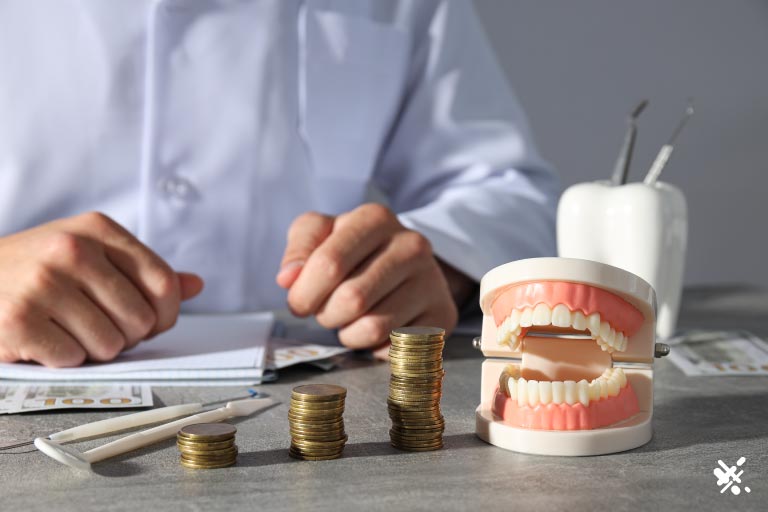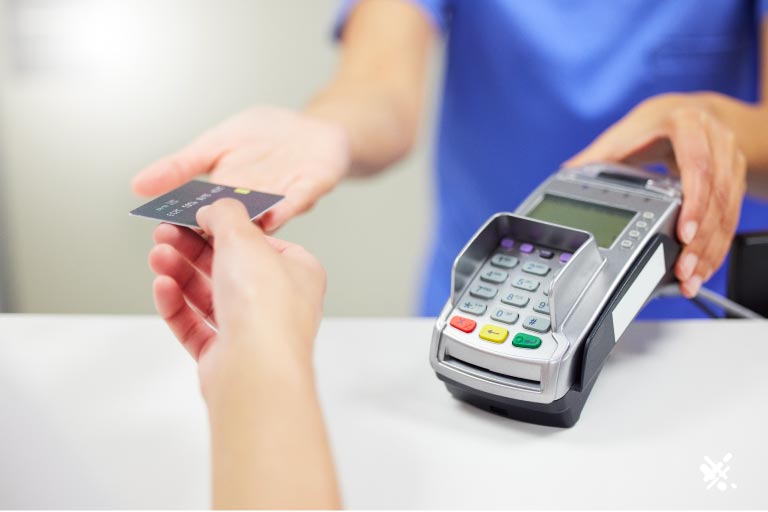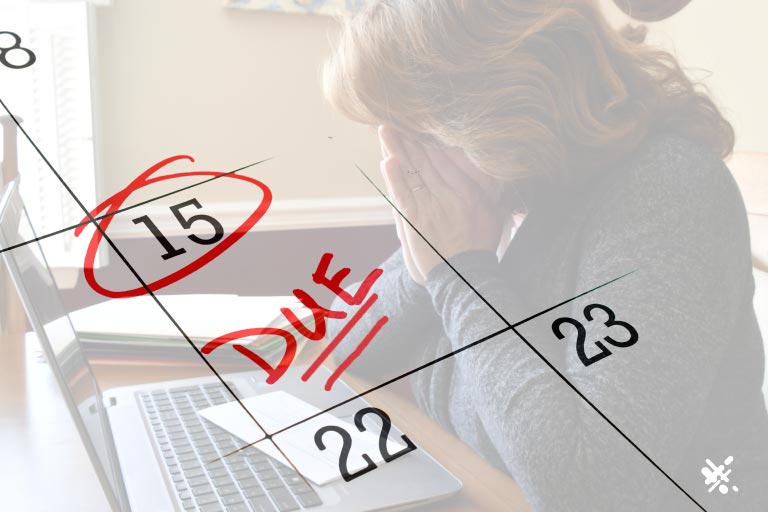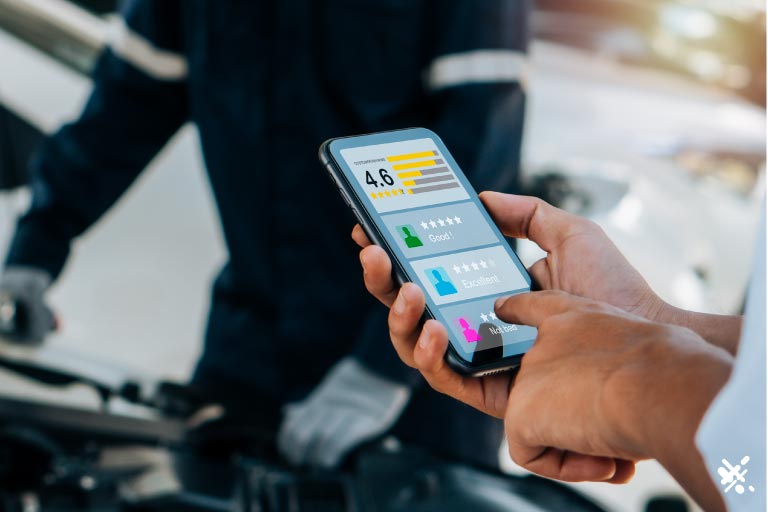Hello, my name is Tricia, and I’m the billing manager at a dental office outside of Denver, Colorado. Now, before your dentist phobia takes over and you stop reading, calm down: I won’t pull any teeth. I won’t even talk to you about brushing your teeth or flossing. But rather about my journey to upgrade our payment processing for dental practices. If you deal with billing, this article is for you.
Okay, I will briefly discuss dental care as it fits into my story. I want to discuss the billing nightmare that unfolded when we didn’t have the right dental merchant services in place. A customer needed a certain procedure, and our dental payment software could not facilitate their particular situation, leading to an avalanche of billing problems.
What is Dental Office Credit Card Processing?
But before we get into that train wreck of a billing scenario, let’s talk about merchant services for dentists. Have you ever wondered how credit card processing for dental offices works? There is a lot of overlap with credit and debit card payment solutions in general.
For example, there isn’t a special type of dental POS (point of sale system). However, particular dental payment systems behind the hardware are unique to the dental industry. These systems need to integrate with electronic patient records and with the insurance billing process. For example—these kinds of concerns set dental payment processing apart from the POS terminal in a retail store.
Dental card services facilitate a customer using a credit or debit card to pay for a procedure. If they don’t have dental insurance, they’re paying for all of it out of pocket. For some patients, that hurts more than the cavity. However, it shouldn’t hurt to fill your cavities because you’re numb.

Dental Payments Include Copays, Premiums, and Collections
Patients who have insurance might still have a copay. The copay is the amount the patient needs to pay, while the insurance company takes care of the rest. Collecting that payment from the insurance company involves the dental office sending some information to the insurance company. While waiting for everything to settle, you must collect payment from the patient.
There are different ways of collecting payment from the patient. Some offices will send a bill. Others will ask for the payment upfront. If you send a bill, you might have problems collecting what you’re owed. That’s why at my dental office, we collect copays at the time of the procedure.
It seems reasonable enough. Typical dental copays usually range from $10 to $50. However, for certain procedures, the copay may be much higher. Like any insurance, there is always a tradeoff between the copay and the premium. Higher monthly premiums mean lower copays and lower deductibles. Lower monthly premiums mean higher copays and deductibles.
Some patients have dental insurance through work. While some workplaces offer great dental insurance, others offer less stellar coverage. And some patients are paying for dental insurance themselves. Some patients cannot afford to spend more than $30 per month on dental insurance, while others can.
How Credit Card Processing for Dentists Works
Now, onto dental credit card processing. At a patient’s visit, they are informed of how much their cost will be based on what insurance will cover. Of course, sometimes the insurance company denies a claim, but that has to be ironed out later. In the meantime, the odds are usually good; they will pay for what they say they’ll pay for.
Because of this, it’s good to collect the patient’s copay upfront on the procedure’s day. We do collect cash, but that’s always a pain because someone has to take it to the bank. We do not collect checks anymore because checks bounce (and also have to be taken to the bank).
Our preferred way of collecting payment is through debit and credit cards. We used to have an older-generation terminal with a magnetic stripe reader. We didn’t have one of the new contactless payment terminals that accepts mobile payments (now we do).
In a nutshell, card payments work like this: the patient presents their card. You accept payment by running the card through the machine. The payment processor that services the machine sends the payment info to the right card network (Visa, Mastercard, Discover, Amex).
The patient’s bank or card issuer sees if they have enough money or credit. If they do, the card network and payment processor help move that money to your merchant account.
Since we were fairly low-tech at that point, our dental payment processing didn’t offer any integration with accounting software or our dental EMR. And it certainly didn’t have extra bells or whistles like a payment plan.
Now, there are healthcare credit cards like CareCredit. But, we also didn’t offer CareCredit at the time (and still don’t because we now offer our own financing and/or payment plans).

How Do Patients Afford Expensive Dental Payments?
And that ended up being our downfall here (that is, not having the buy now pay later option). A payment plan is something that consumers often use for making large purchases like furniture. In fact, you can even use BNPL (as they call it) on Amazon to make small purchases. Now, given the fact that some dental procedures are expensive, you think we would have set up something like that for our patients.
And truth be told, we did have something like that a long time ago. We would allow patients to split up a payment into as many as 12 installments. This, of course, meant sending them a bill every month. And if they didn’t pay it, another one after that.
A crazy high number of patients were just not paying their dental bills, and we were writing off a lot of so-called bad debt. So, we discontinued the payment plan idea and thought we would never look back until we did.
Never say never, they say. An important thing to keep in mind is that one of the biggest reasons we discontinued our payment plan option is that it was not automated. All the accounting and billing would have to be done manually.
There was not even a way to make online payments. The patient would have to call in, and a receptionist would have to input their card into the card reader every time they called.
Collecting Dental Payments Is Lots and Lots of Work
No big deal if you’ve only got one patient doing this, but what if you’ve got one hundred? It becomes an accounting nightmare to juggle all those payments, keeping track of who has paid and who hasn’t. You end up paying a receptionist for another hour or two of work every day to input all those card numbers. Yet another reason to discontinue the payment plan option.
So, moving forward, our only option was payment in full, upfront. It sounds a little ridiculous, and we did lose some business, but we also cut down on our bad debt. Where there is a will, there’s a way, they say. Patients used credit cards to make their payments on larger procedures.
So now, on to what happened that fateful October Day. We had a patient come in because Halloween was around the corner. You see, all the candy escapades associated with this holiday got them to reflect on the state of their mouth. They had actually not been to the dentist in seven years. Seven years! In case you’re wondering, you’re supposed to go at least twice a year.
Of course, the lack of routine dental care was just the tip of the candy corn. When we opened his mouth to take a look, we counted 11 cavities that needed to be filled, and three of them needed crowns.

Let’s Get These Cavities Filled ASAP
We didn’t have much booked that week, and this patient was actually eager to get them out of the way…so he asked to have them filled the next day. We thought taking care of it all in one shot would be a little much, so we said we’d do it in two separate visits. So, we placed two crowns on that second visit and planned to place the third one on his next visit.
No problems arose with the first visit. The patient came in, the cavities were filled, and he went on his merry way after making his copay at the POS at the front desk. We sent our 837D off to the insurance company for all 11 cavities and the three crowns. So far, so good.
Unfortunately, the insurance company disagreed with us about the necessity of the third crown. They asked to see X-rays. We sent the X-rays. They reviewed the X-rays and still disagreed. The dentist got on the phone with them. They still disagreed. Maybe they were fed up with the other ten cavities. Who knows. They agreed to a filling but no crown, claiming the tooth was intact enough.
Whatever the reason, we had to break it to the patient. We called him and let him know the bad news. Of course, we still recommended the procedure. He agreed to come in and have the crown installed, but he also wanted it to match the other two crowns.
The Pros and Cons of Porcelain and Ceramic Crowns
The other two crowns were ceramic. We routinely use ceramic because it’s more durable and looks more natural than Porcelain-fused-to-metal (PFM) crowns. Of course, full gold is also an option, but these days, most patients want fillings and crowns that perfectly match the color of their teeth.
This patient’s insurance covered the majority of the ceramic crowns. But we weren’t counting on them denying the third crown. Truth be told, crowns are one of the more common insurance denials. However, we were convinced this patient had a strong case for all three.
We were wrong. So, the only thing to do would be to have the patient pay for the third crown out of pocket. This is in addition to their deductible for the other ten cavities. Our pricing point for ceramic crowns was $1,200. Our pricing point for PFM crowns was half that, at $600. That said, we mentioned the less expensive option. We like to be transparent with our patients.
But no, he wanted this crown to match the other two, even though it would look pretty much the same. And while ceramic crowns are more durable, his main reason for matching them up was just because he wanted them all to be the same. It was “kind of an OCD thing,” he said.
Okay, the customer is always right, right? So we made sure he understood that the ceramic crown would be twice as much and that he would indeed be paying out of pocket for the whole thing, in addition to the copays for the other cavities. He was prepared to make this payment, or so we thought.

Whoops…I Forgot About That Bill
The day of the procedure had arrived. Everything went smoothly. The novocaine was effective, and the patient did not feel anything while the dentist was poking around in there. He came out front to make his payment, and that’s when things went south.
The payment processor declined his debit card. We tried running it again. No luck. A third time. He was convinced he had put in the right PIN. Did he have another card he could use? No, he did not. So he took out his mobile phone and logged on to his mobile banking app.
He clapped his hand to his forehead. It turns out that visiting the dentist was not the only thing that had fallen under the radar screen. He had also forgotten about his car insurance. He was billed annually in one lump sum to save money. But of course, that meant he didn’t have much money left in his bank account today. Certainly not enough to pay for his crown.
This type of moment can get pretty awkward for a small business like a dental practice. You’ve already provided your customers with a service, assuming they can pay. When the bill comes around, they can’t.
So what do you do? Put them to work scrubbing dishes? As a dental office, we didn’t exactly have any dishes to scrub, although I did at home. He also was certainly not qualified to do any teeth cleaning. And I was not inviting him over, either.
Sorry… I’m Not Going to Be Able to Make My Dental Payment
To make matters worse, the patient told us that he had other bills coming up and wouldn’t have this much money in his account for a while. This was one reason he wanted to get the crowns out of the way. But he had forgotten about the automatic insurance payment.
There was nothing to do but revert to our old-fashioned system of sending several bills so he could pay in installments. We asked if he felt he could apply for a credit card, but he didn’t want to. We certainly couldn’t force him to. All we could do was rely on his word to pay his bills (to us) on time.
Unfortunately, that didn’t work out so well either. We weren’t exactly sure what happened when he got home, but we guessed that he probably did what most consumers do when sizing up their medical debt against their other debts: he figured he could avoid paying his dental bill.
After all, if you don’t pay your mortgage, the bank will come after your house. Sometimes, I wish a similar thing was in place for dental work…like maybe we take your crowns back. But that sounds a little too creepy, doesn’t it?

The Patient Was Sent to Collections
We sent one bill. Nothing came back. We sent another the next month. Nothing. A third month went by. Nothing. We started to make phone calls-polite ones, of course. They all went straight to his voicemail. We sent letters. Persistent letters. It was almost like that scene in Harry Potter where the owls bring him those hundreds of letters…minus the owls.
Nothing happened. We were out $1,200 for the crown. Of course, we couldn’t just let it go for something that sizable. It was time to send this baby to collections. There was one particular firm we had worked with over the years, which helped us recover a significant portion of our bad debt- not all of it, but a decent amount.
Of course, the downside of working with a collection agency is that they will take a percentage of the money. But one in the hand is worth two in the bush, as those who hunt birds say. Sending a bill to collections is really not the goldmine you think it is. Collection agencies will take 25-50% of the money collected. Collections are not about getting your money back but rather staunching the bleeding.
In this case, they wanted 25%. But $800 was certainly better than nothing. And the threat of having this delinquency show up on his credit report was something we thought would motivate the patient. Or would it? After all, he hadn’t wanted to apply for a credit card to pay for the crown. Maybe he already had bad credit or didn’t care to use credit in general.
Collections, Fees, and Bad Reviews Online
Well, it got worse. The collection agency added a $100 fee to the debt, so now the patient was looking at $1,300. It also turned out that this patient left the country shortly after the procedure and had been traveling for several weeks. He hadn’t seen our letters or received our phone calls. And then, when he got back, he was slammed with a $1,300 collection notice.
This patient was pretty furious. Instead of calling us to discuss the situation, he went on to every single review site he could find—Google, Yelp, Facebook—and left our practice a very long, bad review about the billing issue. This did not make us look good, I’ll tell you that.
Sure, we had a decent 4.7 overall rating, but this dropped us to a 4.3. Still sounds good, but now we were behind other dental practices. And the review was very long (and furious), which attracted a lot of attention from potential customers.
But wait…it gets worse. The insurance company ended up denying one other crown. This type of thing rarely happens, but this patient certainly seemed to be drawing some bad luck. This meant we would have to eat another $1,200 or pass it on to the patient. As he already wasn’t paying the first $1,200, this did not seem likely. So we decided to let the second one go and write it off.

But Wait… There’s More
And yes, it gets worse. A new receptionist in the practice was not in the loop about all that. She found the paperwork about the denial and decided to be proactive. After all, proactivity is usually a good thing.
So she contacted the collection agency and added this bill to the first one. This was a pretty sizable oversight on both their parts because the second “bill” wasn’t 60 days delinquent yet. Or perhaps it was if you’re supposed to consider it retroactively. I’m not sure… it’s quite the puzzle for a paralegal or a more experienced billing specialist.
Can you picture this patient’s upset when he got a second collection letter? He went to all those review sites and updated his review to be even more scathing. In fact, it was downright Shakespearian.
I can almost picture him carrying a skull around and intoning the words in a rich English accent. Then, they had the gall to send me a second notice of delinquency, compiling even more injury upon the insult delivered by the first collections notice.
Dental Payment Plans Make Everybody Happy
We saved the review and framed it for a good laugh because it’s no longer online. You see, we were able to straighten things out with the patient. And in doing that, we got some new payment technology.
Our dentist credit card processing has been updated! We now have new terminals that accept the contactless payments everyone is raving about. Patients can now conveniently pay with their contactless cards and mobile wallets. They love this feature.
Moreover, the POS software integrates with our accounting software, patient records, and many other business tools. One item among these tools is financing and/or billing plans. As a result, these new dental payment solutions allow us to give our patients the option of paying in installments.
As mentioned, we had presented that option before, but none of it was automated. Which really made it a disliked option within the office. Now, it’s 100% automated. We have installment and financing options, which creates more flexibility for our patients to get the work they need and a higher probability they will say yes to the work. This also means we are more likely to be paid for our work.

How Does Point of Sale Financing Work For Dental Payments?
First, the financing is much different than asking the patient to pay over time. With the financing, we are paid in a lump sum within 48 hours by our payment processor’s partner lender. The patient is then responsible for making payments to the lender. There’s no more sending patients paper bills or placing phone calls.
The installment option is also very automated. We take ACH or card information upfront to automatically withdraw payments from the patient’s checking account or credit card. They are sent text and email reminders that an automated payment is coming up.
The installment option is unlike point-of-sale financing in that we still have to collect the money. But because we use ACH payments and automated reminders, everything goes much more smoothly. Much more so than sending a paper will and waiting for the patient to call in their payment.
Generally speaking, we will encourage the patient to apply for the financing first and use the installment plan as a last resort. As mentioned, with point-of-sale financing, we are paid upfront and don’t have to worry about collecting our money.
The Best Dental Payment Solution
So, that said, we could cancel the arrangement with the collection agency and enroll our patient into some automated billing. Since this fiasco, his procedure has been paid off, and we’ve offered this option to hundreds of other patients.
In fact, the flexibility of this payment arrangement is one of the things that patients most appreciate about our practice. This option makes certain procedures possible for patients with large copays and deductibles. Nobody likes to go in for dental work, but if you need a filling, a crown, or a root canal, you need it. And now, with our payment processing solutions, you can pay for it incrementally.
And in case you’re wondering, the customer edited their review, which helped improve our reputation online. I can’t recommend the software we are using enough: Practice Management Bridge. We did not have to change our ERM or our billing software.
Their partnership with ECS Payments also gave us some new POS hardware, allowing patients to pay with contactless cards and digital wallets on their mobile devices. The combo is the best credit card processing for a dental office. It is a win-win for everyone at our dental office.
